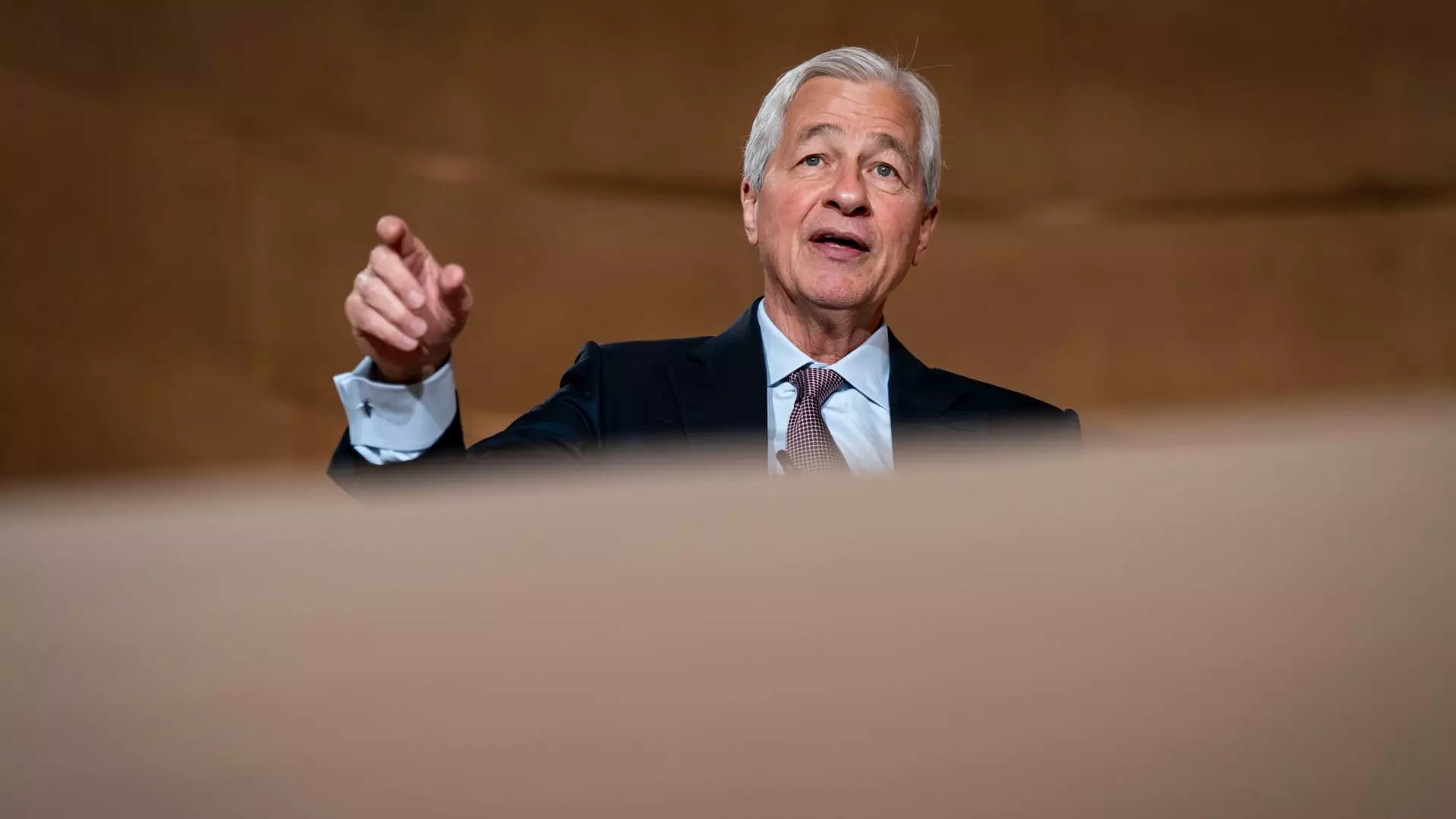In an era where optimism often masquerades as prudence, Jamie Dimon, the CEO of JPMorgan Chase, bravely brings a somber message about the hidden peril of complacency in today’s economic landscape. At the bank’s annual investor day in New York, Dimon articulated a perspective that should terrify any sound-minded investor: the financial market is obliviously teetering on the edge of a precipice, powered by reckless fiscal policies and an alarming disregard for impending realities. For someone at the helm of the largest U.S. bank, Dimon’s insights ought to serve as a jolting reality check to a complacent investment community.
Dimon asserts that the magnitude of U.S. deficits and the dangers they pose to the economy cannot be overstated. He pointedly suggested that both markets and central bankers are failing to comprehend the intertwined risks of fiscal irresponsibility, global trade tensions, and potential stagflation. He seems to be unfurling a clarion call for a serious reassessment of the inflationary pressures that could emerge from current policies. Through his lens, one can see the looming specter of economic stagnation paired with rising costs, an ominous cocktail reminiscent of the 1970s.
The Mirage of Stability
What is deeply concerning is Dimon’s assertion of “ordinary complacency” amid extraordinary market volatility. Recent market recoveries from significant downturns might give the impression of stability, but Dimon argues otherwise. Investors are engaging in mass denial, riding a wave of over-optimism that has been buoyed, rather ironically, by both trading solace and the absence of punishing tariffs. Delving deeper into his perspective, the real risk lies in the disconnect between market valuations and the fundamental health of the economy. With earnings estimates for S&P 500 companies on shaky ground, Dimon forecasts a chilling dip in those projections to a disheartening 0% growth in a matter of months.
This conveys not merely a whisper of caution, but a thundering revelation: the markets may not simply be mispriced; they risk collapsing under the weight of unrealistic expectations and inflated optimism. Investors who cling to the notion that stock values can remain untouched by the very transient realities of corporate health are likely stepping into a bear trap.
The Credibility Crisis of Central Bankers
Compounding this precarious scenario is Dimon’s critique of central banks, which he believes are far too complacent themselves. Their presumption of being able to pilot through choppy fiscal waters, characterized by high deficits and unpredictable inflationary pressures, may soon be tested. Under Dimon’s watchful eye, the very institutions tasked with stabilizing the economy are viewing crises with a misguided sense of confidence. This ethos is troublingly ironic when contrasted against the backdrop of the recent U.S. credit rating downgrade by Moody’s, issuing a clarion call for more prudent fiscal governance.
Arguably, the central banking frameworks appear terrified to pull the nuanced levers they are supposed to wield expertly. They fear that any tightened monetary policy might lead to public backlash, thereby perpetuating a cycle of stagnation. One can’t help but question whether the steadfast adherence to low interest rates, as well as quantitative easing, is really as beneficial as touted. Might this represent an unyielding commitment to a status quo that is ultimately unsustainable?
The Dangers of ‘Wait-and-See’ Mentality
Dimon’s insights don’t just linger in abstract economic theory; they resonate deeply within the corporate arena. According to one of Dimon’s top deputies, corporate clients show a concerning “wait-and-see” mentality regarding acquisitions and major deals. In a landscape defined by uncertainty, this reluctance translates to tangible declines in investment banking revenues, which are now forecasted to dip significantly in upcoming quarters.
Such stagnation ties back to Dimon’s overall nudge toward awareness; businesses cannot afford to remain reactive while the world whirls around them. Inaction, catalyzed by uncertainty, engenders a cycle that ultimately stifles innovation and growth. For companies hoping to navigate this treacherous terrain, the stakes are high, and decisive action is imperative.
By navigating the complexities of these combined challenges, Dimon is initiating a necessary dialogue around economic transparency. The lavish narratives spun by bulls and optimists may soon collide with grim realities that underscore the need for realism, responsibility, and perhaps a more cautious approach to investing. Leaping blindly into uncertainty may very well find investors facing repercussions reminiscent of past economic downfalls.


Leave a Reply